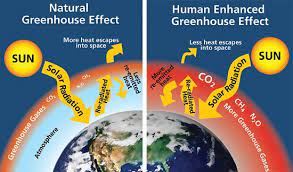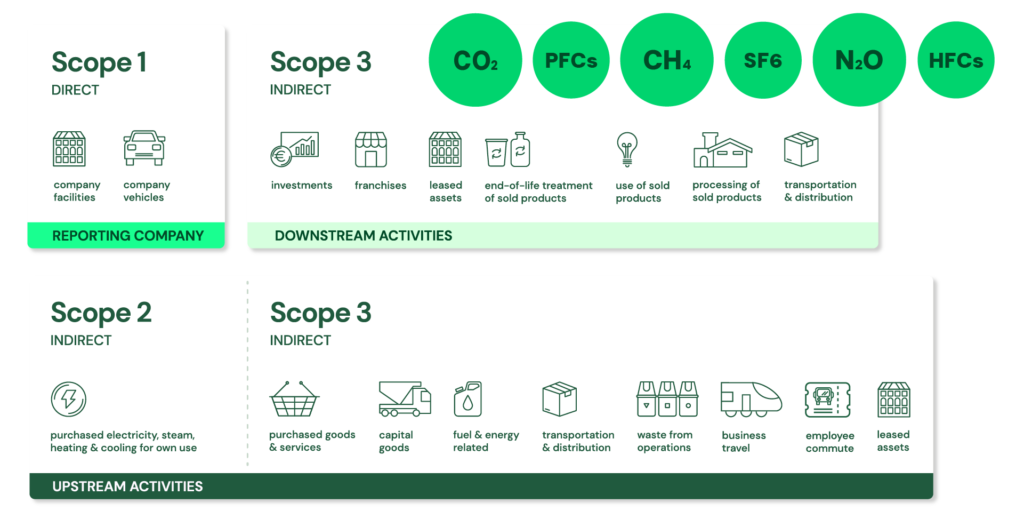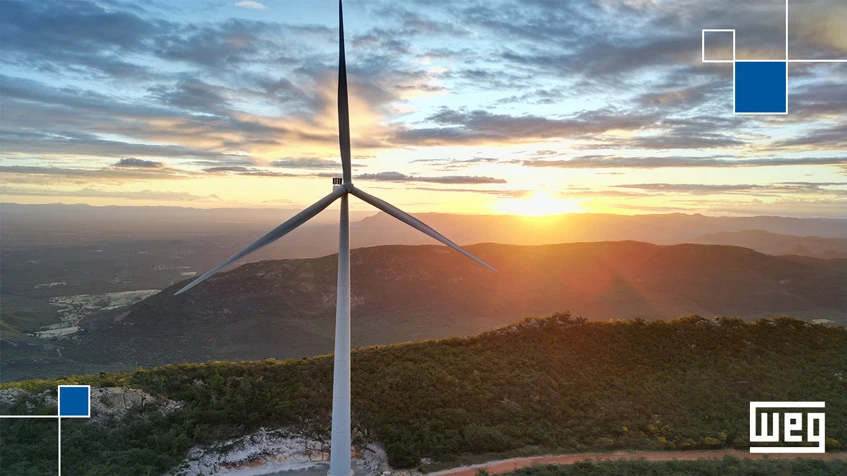WEG – Innovative partnership between WEG, Petrobras, and Statkraft brings the largest onshore wind turbine in the Americas into operation
Modernization project of the Brotas de Macaúbas Complex will increase efficiency and reinforce the pioneering spirit of the venture with a 7MW installed capacity turbine
WEG, Petrobras, and Statkraft have put into operation the largest onshore wind turbine in the Americas. Petrobras invested BRL 130 million, originating from the R&D clause with ANP, and partnered with WEG, a global Brazilian manufacturer of electrical and electronic equipment, to develop the turbine. The project also received financing from BNDES and support from the Federal Government through the Ministry of the Environment. Built by WEG, with 7MW of installed capacity, it can generate around 2,500 MWh per month, equivalent to the annual consumption of about 15,000 Brazilian homes.
The wind turbine was purchased and installed by Statkraft as part of the modernization of the Seabra Wind Farm, located in the Brotas de Macaúbas Complex, in Bahia. The R&D clause is part of concession contracts for oil and natural gas exploration and production, requiring companies to invest a percentage of their gross revenue, generated by high-production fields, into Research, Development, and Innovation projects.
“This is an important milestone. The theoretical and practical expertise we gained during this development will support other renewable generation projects, reinforcing our commitment to diversification into low-carbon businesses,” said Angélica Laureano, Petrobras’ Director of Energy Transition and Sustainability.
“By directing part of its investments to co-create a new generation of wind energy equipment, Petrobras acquires knowledge that may support future projects, while also contributing to the diversification of Brazil’s energy matrix,” highlighted Renata Baruzzi, Petrobras’ Director of Engineering, Technology, and Innovation.
For João Paulo Gualberto da Silva, Managing Director of WEG Energia, “The development of the 7MW wind turbine reflects our innovation capacity and consolidates WEG’s role as a key player in advancing wind energy. This project, in addition to being a technological milestone, reinforces our commitment to solutions that promote energy efficiency and sustainability.”
The modernization of the Brotas de Macaúbas Complex will bring significant efficiency and productivity gains, leveraging the region’s excellent wind conditions. As a result, the venture will continue to supply thousands of households with clean energy, maintaining its relevance in Brazil’s wind power sector.
“The partnership between Statkraft, WEG, and Petrobras to build the largest onshore wind turbine in the Americas not only reaffirms our commitment to innovation and operational efficiency, but also contributes to a cleaner energy matrix and sets a new standard for the Brazilian power sector,” said Thiago Tomazzoli, Statkraft’s CEO.
One of the advantages of the new turbine is the reduction in energy costs. With this capacity, it produces more electricity per unit of occupied area, reducing the need to install multiple turbines. This also optimizes land use and tends to lower overall installation and maintenance costs.
Partnerships
The agreement between Petrobras and WEG, signed in 2023, included the development of technologies for the manufacturing of turbine components tailored to the country’s wind conditions, as well as the construction and testing of a prototype, with technical and commercial benefits for Petrobras. Statkraft acted as WEG’s client, acquiring the turbine installed in the Seabra Wind Farm, part of the Brotas de Macaúbas Wind Complex, in the municipality of the same name, in Bahia. The turbine, commissioned in July, reaches 220 meters from the ground to the tip of the blade—equivalent to the height of six Christ the Redeemer statues—and weighs 1,830 tons, roughly the same as 1,660 compact cars or 44 Boeing 737 aircraft. WEG expects it may be produced on a large scale depending on market demand for new wind projects.
SourceWEG
EMR Analysis
More information on WEG: See the full profile on EMR Executive Services
More information on Alberto Yoshikazu Kuba (Executive President, WEG Group): See the full profile on EMR Executive Services
More information on João Paulo Gualberto da Silva (Managing Director, WEG Energy Business Unit, WEG Group): See the full profile on EMR Executive Services
More information on Petróleo Brasileiro S.A. (“Petrobras”): https://petrobras.com.br/en/ + We are a publicly traded corporation operating in an integrated and specialized manner in the oil, natural gas, and energy industry. We have expertise in exploration and production as a result of decades of development in the Brazilian basins, especially in deep and ultra-deep waters. This has made us a world leader in the segment.
Our business goes beyond field reach and oil and gas withdrawal. This entails a long process by which we transport oil and gas to our refineries and natural gas treatment units. Therefore, those units must be equipped and constantly evolving to provide the best products. We have as priority to operate at low costs and with a low carbon footprint, which contributes to our commitment to a sustainable development for a society in transition.
- Investments: US$ 12.6bn
- Net Revenue: US$ 102.4bn
- Net Profit: US$ 25bn
- Shareholders: More than 1,000,000
- Number of Employees: 40,400
More information on Magda Chambriard (President, Petróleo Brasileiro S.A. (“Petrobras”)): https://petrobras.com.br/en/quem-somos/liderancas + https://www.linkedin.com/in/magda-chambriard/
More information on Angélica Laureano (Director, Energy Transition and Sustainability, Petróleo Brasileiro S.A. (“Petrobras”)): https://petrobras.com.br/en/quem-somos/liderancas + https://www.linkedin.com/in/angelica-laureano-2a069546/
More information on Renata Baruzzi (Director, Engineering, Technology, and Innovation, Petróleo Brasileiro S.A. (“Petrobras”)): https://petrobras.com.br/en/quem-somos/liderancas + https://www.linkedin.com/in/renata-baruzzi-2b4b2b21/
More information on Statkraft: https://www.statkraft.com/ + Statkraft is a leading company in hydropower internationally and Europe’s largest generator of renewable energy. The Group produces hydropower, wind power, solar power, gas-fired power and supplies district heating. Statkraft is a global company in energy market operations. Statkraft has around 7,000 employees in more than 20 countries.
More information on Birgitte Ringstad Vartdal (President and Chief Executive Officer, Statkraft): https://www.statkraft.com/about-statkraft/organisation/group-management/ + https://www.linkedin.com/in/birgitte-ringstad-vartdal-2b14482/
More information on Fernando De Lapuerta (Executive Vice President, International, Statkraft): https://www.statkraft.com/contacts/explained-experts/fernando-de-lapuerta/ + https://www.linkedin.com/in/delapuerta/
More information on Thiago Tomazzoli (Chief Executive Officer and President, Statkraft Brazil, Statkraft): https://www.statkraft.com.br/contatos/thiago-tomazzoli/ + https://www.linkedin.com/in/thiago-tomazzoli-bb0b6342/
More information on ANP (National Agency of Petroleum, Natural Gas and Biofuels): https://www.gov.br/anp/pt-br + The ANP is responsible for regulating, contracting, and monitoring economic activities related to the petroleum, natural gas, biofuel, and hydrogen industries. Its institutional authority is established in Law No. 9,478 of August 6, 1997 (Petroleum Law) , regulated by Decree No. 2,455 of January 14, 1998 .
The Agency is part of the indirect Federal Administration, linked to the Ministry of Mines and Energy (MME) and subject to a special autonomous regime. It is the body responsible for regulating not only the oil and petroleum industry, but also the natural gas and biofuels industries, operating in the segments of oil and natural gas exploration and production, distribution of royalties and special participations, refining, natural gas processing, biodiesel production, transportation and storage, distribution and resale of fuels, fuel quality monitoring, and price surveys.
The Agency operates “from the well to the pump,” regulating more than 130,000 companies, covering activities ranging from oil and natural gas exploration in Brazil’s sedimentary basins to procedures for ensuring the quality of fuels sold to end consumers. Regulatory activity necessarily involves constant monitoring of compliance with established standards.
More information on Artur Watt Neto (Director General, ANP): https://www.gov.br/anp/pt-br/composicao/diretoria-colegiada/composicao-diretoria-colegiada + https://www.linkedin.com/in/artur-watt-neto-2a6aa86a/
More information on BNDES (The Brazilian Development Bank): https://www.bndes.gov.br/SiteBNDES/bndes/bndes_en/ + The Brazilian Development Bank (BNDES) is the main financing agent for development in Brazil. Since its foundation, in 1952, the BNDES has played a fundamental role in stimulating the expansion of industry and infrastructure in the country. Over the course of the Bank’s history, its operations have evolved in accordance with the Brazilian socio-economic challenges, and now they include support for exports, technological innovation, sustainable socio-environmental development and the modernization of public administration.
The Bank offers several financial support mechanisms to Brazilian companies of all sizes as well as public administration entities, enabling investments in all economic sectors. In any supported undertaking, from the analysis phase up to the monitoring, the BNDES emphasizes three factors it considers strategic: innovation, local development and socio-environmental development.
More information on Aloizio Mercadante Oliva (Chair of the Executive Board, BNDES): https://ri.bndes.gov.br/en/corporate-governance/governance-structure/ +
EMR Additional Notes:
- Fundamental Units of Electricity:
- Ampere – Amp (A):
- Amperes measure the flow of electrical current (charge) through a circuit. Ampere (A) is the unit of measure for the rate of electron flow, or current, in an electrical conductor.
- One ampere is defined as one coulomb of electric charge moving past a point in one second. The ampere is named after the French physicist André-Marie Ampère, who made significant contributions to the study of electromagnetism.
- Milliampere (mA) is a unit of electric current equal to one-thousandth of an ampere (1mA=10−3A). The prefix “milli” signifies 10−3 in the metric system. This unit is commonly used to measure small currents in electronic circuits and consumer devices.
- Volts measure the force or potential difference that drives the flow of electrons through a circuit.
- Kilovolt (kV) is a unit of potential difference equal to 1,000 volts.
- Watts measure the rate of energy consumption or generation, also known as power.
- Amperes measure the flow of electrical current (charge) through a circuit. Ampere (A) is the unit of measure for the rate of electron flow, or current, in an electrical conductor.
- Power vs. Energy: how electricity is measured and billed.
- Power (measured in kW, MW, GW, TW): Rate at which energy is used or generated at a given moment.
- Energy (measured in kWh, MWh, GWh, TWh): Total amount of power consumed or generated over a period of time (i.e., Power x Time).
- Real Power Units: actual power that performs work.
- Kilowatt (KW):
- A kilowatt is simply a measure of how much power an electric appliance consumes—it’s 1,000 watts to be exact. You can quickly convert watts (W) to kilowatts (kW) by dividing your wattage by 1,000: 1,000W 1,000 = 1 kW.
- Megawatt (MW):
- One megawatt equals one million watts or 1,000 kilowatts, roughly enough electricity for the instantaneous demand of 750 homes at once.
- Gigawatt (GW):
- A gigawatt (GW) is a unit of power, and it is equal to one billion watts.
- According to the Department of Energy, generating one GW of power takes over three million solar panels or 310 utility-scale wind turbines
- Terawatt (TW):
- One terawatt is equal to one trillion watts (1,000,000,000,000 watts). The main use of terawatts is found in the electric power industry, particularly for measuring very large-scale power generation or consumption.
- According to the United States Energy Information Administration, America is one of the largest electricity consumers in the world, using about 4,146.2 terawatt-hours (TWh) of energy per year.
- Kilowatt (KW):
- Apparent Power Units: measures the total power in a circuit, including power that does not perform useful work.
- Kilovolt-Amperes (kVA):
- Kilovolt-Amperes (kVA) stands for Kilo-volt-amperes, a term used for the rating of an electrical circuit. A kVA is a unit of apparent power, which is the product of the circuit’s maximum voltage and current rating.
- The difference between real power (kW) and apparent power (kVA) is crucial. Real power (kW) is the actual power that performs work, while apparent power (kVA) is the total power delivered to a circuit, including the real power and the reactive power (kVAR) that doesn’t do useful work. The relationship between them is defined by the power factor. Since the power factor is typically less than 1, the kVA value will always be higher than the kW value.
- Megavolt-Amperes (MVA):
- Megavolt-Amperes (MVA) is a unit used to measure the apparent power in a circuit, primarily for very large electrical systems like power plants and substations. It’s a product of the voltage and current in a circuit.
- 1 MVA is equivalent to 1,000 kVA, or 1,000,000 volt-amperes.
- Kilovolt-Amperes (kVA):
- Specialized Power Units: used specifically for renewable energy, especially solar.
- KiloWatt ‘peak’ (KWp):
- kWp stands for kilowatt ‘peak’ power output of a system. It is most commonly applied to solar arrays. For example, a solar panel with a peak power of 3kWp which is working at its maximum capacity for one hour will produce 3kWh. kWp (kilowatt peak) is the total kw rating of the system, the theoretical ‘peak’ output of the system. e.g. If the system has 4 x 270 watt panels, then it is 4 x 0.27kWp = 1.08kWp.
- The Wp of each panel will allow you to calculate the surface area needed to reach it. 1 kWp corresponds theoretically to 1,000 kWh per year.
- KiloWatt ‘peak’ (KWp):
- Ampere – Amp (A):
- Carbon Dioxide (CO2):
- Primary greenhouse gas emitted through human activities. Carbon dioxide enters the atmosphere through burning fossil fuels (coal, natural gas, and oil), solid waste, trees and other biological materials, and also as a result of certain chemical reactions (e.g., manufacture of cement). Carbon dioxide is removed from the atmosphere (or “sequestered”) when it is absorbed by plants as part of the biological carbon cycle.
- Biogenic Carbon Dioxide (CO2):
- Biogenic Carbon Dioxide (CO2) and Carbon Dioxide (CO2) are the same molecule. Scientists differentiate between biogenic carbon (that which is absorbed, stored and emitted by organic matter like soil, trees, plants and grasses) and non-biogenic carbon (that found in all other sources, most notably in fossil fuels like oil, coal and gas).
- Decarbonization:
- Reduction of carbon dioxide emissions through the use of low carbon power sources, and achieving a lower output of greenhouse gases into the atmosphere.
- Carbon Footprint:
- There is no universally agreed definition of what a carbon footprint is.
- A carbon footprint is generally understood to be the total amount of greenhouse gas (GHG) emissions that are directly or indirectly caused by an individual, organization, product, or service. These emissions are typically measured in tonnes of carbon dioxide equivalent (CO2e).
- In 2009, the Greenhouse Gas Protocol (GHG Protocol) published a standard for calculating and reporting corporate carbon footprints. This standard is widely accepted by businesses and other organizations around the world. The GHG Protocol defines a carbon footprint as “the total set of greenhouse gas emissions caused by an organization, directly and indirectly, through its own operations and the value chain.”
- CO2e (Carbon Dioxide Equivalent):
- CO2e means “carbon dioxide equivalent”. In layman’s terms, CO2e is a measurement of the total greenhouse gases emitted, expressed in terms of the equivalent measurement of carbon dioxide. On the other hand, CO2 only measures carbon emissions and does not account for any other greenhouse gases.
- A carbon dioxide equivalent or CO2 equivalent, abbreviated as CO2-eq is a metric measure used to compare the emissions from various greenhouse gases on the basis of their global-warming potential (GWP), by converting amounts of other gases to the equivalent amount of carbon dioxide with the same global warming potential.
- Carbon dioxide equivalents are commonly expressed as million metric tonnes of carbon dioxide equivalents, abbreviated as MMTCDE.
- The carbon dioxide equivalent for a gas is derived by multiplying the tonnes of the gas by the associated GWP: MMTCDE = (million metric tonnes of a gas) * (GWP of the gas).
- For example, the GWP for methane is 25 and for nitrous oxide 298. This means that emissions of 1 million metric tonnes of methane and nitrous oxide respectively is equivalent to emissions of 25 and 298 million metric tonnes of carbon dioxide.
- Carbon Capture and Storage (CCS) – Carbon Capture, Utilisation and Storage (CCUS):
- CCS involves the capture of carbon dioxide (CO2) emissions from industrial processes. This carbon is then transported from where it was produced, via ship or in a pipeline, and stored deep underground in geological formations.
- CCS projects typically target 90 percent efficiency, meaning that 90 percent of the carbon dioxide from the power plant will be captured and stored.
- CCUS adds the utilization aspect, where the captured CO2 is used as a new product or raw material.
- Carbon Dioxide Removal (CDR):
- Carbon Dioxide Removal encompasses approaches and methods for removing CO2 from the atmosphere and then storing it permanently in underground geological formations, in biomass, oceanic reservoirs or long-lived products in order to achieve negative emissions.
- Direct Air Capture (DAC):
- Technologies that extract CO2 directly from the atmosphere at any location, unlike carbon capture which is generally carried out at the point of emissions, such as a steel plant.
- Constraints like costs and energy requirements as well as the potential for pollution make DAC a less desirable option for CO2 reduction. Its larger land footprint when compared to other mitigation strategies like carbon capture and storage systems (CCS) also put it at a disadvantage.
- Carbon Credits or Carbon Offsets:
- Permits that allow the owner to emit a certain amount of carbon dioxide or other greenhouse gases. One credit permits the emission of one ton of carbon dioxide or the equivalent in other greenhouse gases.
- The carbon credit is half of a so-called cap-and-trade program. Companies that pollute are awarded credits that allow them to continue to pollute up to a certain limit, which is reduced periodically. Meanwhile, the company may sell any unneeded credits to another company that needs them. Private companies are thus doubly incentivized to reduce greenhouse emissions. First, they must spend money on extra credits if their emissions exceed the cap. Second, they can make money by reducing their emissions and selling their excess allowances.
- Global Warming:
- Global warming is the long-term heating of Earth’s climate system observed since the pre-industrial period (between 1850 and 1900) due to human activities, primarily fossil fuel burning, which increases heat-trapping greenhouse gas levels in Earth’s atmosphere.
- Global Warming Potential (GWP):
- The heat absorbed by any greenhouse gas in the atmosphere, as a multiple of the heat that would be absorbed by the same mass of carbon dioxide (CO2). GWP is 1 for CO2. For other gases it depends on the gas and the time frame.
- Carbon dioxide equivalent (CO2e or CO2eq or CO2-e) is calculated from GWP. For any gas, it is the mass of CO2 which would warm the earth as much as the mass of that gas. Thus it provides a common scale for measuring the climate effects of different gases. It is calculated as GWP times mass of the other gas. For example, if a gas has GWP of 100, two tonnes of the gas have CO2e of 200 tonnes.
- GWP was developed to allow comparisons of the global warming impacts of different gases.
- Greenhouse Gas (GHG):
- A greenhouse gas is any gaseous compound in the atmosphere that is capable of absorbing infrared radiation, thereby trapping and holding heat in the atmosphere. By increasing the heat in the atmosphere, greenhouse gases are responsible for the greenhouse effect, which ultimately leads to global warming.
- The main gases responsible for the greenhouse effect include carbon dioxide, methane, nitrous oxide, and water vapor (which all occur naturally), and fluorinated gases (which are synthetic).

- GHG Protocol Corporate Standard Scope 1, 2 and 3: https://ghgprotocol.org/ + The GHG Protocol Corporate Accounting and Reporting Standard provides requirements and guidance for companies and other organizations preparing a corporate-level GHG emissions inventory. Scope 1 and 2 are typically mandatory for companies that are required to report their emissions by national or regional regulations. The GHG Protocol itself is a voluntary standard.
- Scope 1: Direct emissions:
- Direct emissions from company-owned and controlled resources. In other words, emissions are released into the atmosphere as a direct result of a set of activities, at a firm level. It is divided into four categories:
- Stationary combustion (e.g from fuels, heating sources). All fuels that produce GHG emissions must be included in scope 1.
- Mobile combustion is all vehicles owned or controlled by a firm, burning fuel (e.g. cars, vans, trucks). The increasing use of “electric” vehicles (EVs), means that some of the organisation’s fleets could fall into Scope 2 emissions.
- Fugitive emissions are leaks from greenhouse gases (e.g. refrigeration, air conditioning units). It is important to note that refrigerant gases are a thousand times more dangerous than CO2 emissions. Companies are encouraged to report these emissions.
- Process emissions are released during industrial processes, and on-site manufacturing (e.g. production of CO2 during cement manufacturing, factory fumes, chemicals).
- Direct emissions from company-owned and controlled resources. In other words, emissions are released into the atmosphere as a direct result of a set of activities, at a firm level. It is divided into four categories:
- Scope 2: Indirect emissions – owned:
- Indirect emissions from the generation of purchased energy, from a utility provider. In other words, all GHG emissions released in the atmosphere, from the consumption of purchased electricity, steam, heat and cooling. For most organisations, electricity will be the unique source of scope 2 emissions. Simply stated, the energy consumed falls into two scopes: Scope 2 covers the electricity consumed by the end-user. Scope 3 covers the energy used by the utilities during transmission and distribution (T&D losses).
- Scope 3: Indirect emissions – not owned:
- Indirect emissions – not included in scope 2 – that occur in the value chain of the reporting company, including both upstream and downstream emissions. In other words, emissions are linked to the company’s operations. According to the GHG protocol, scope 3 emissions are separated into 15 categories.
- Scope 1: Direct emissions:



